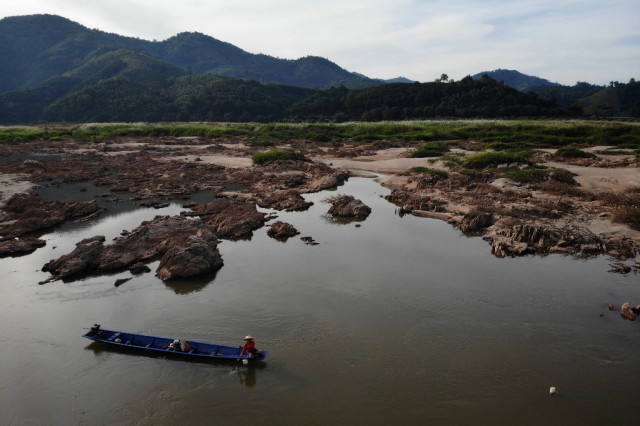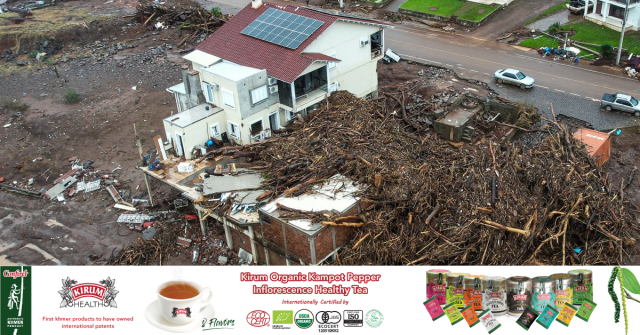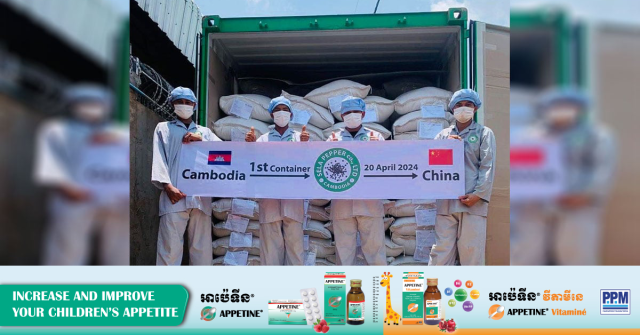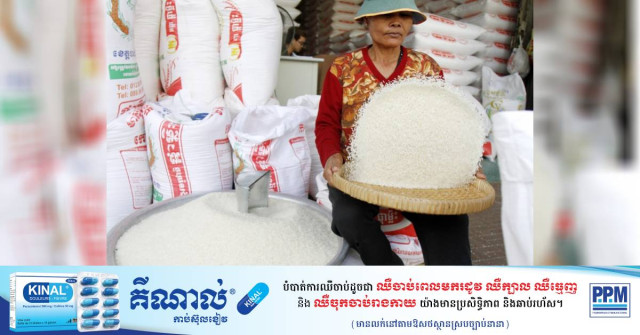Opinion: Economic and Political Relevance of Microfinance for Cambodia
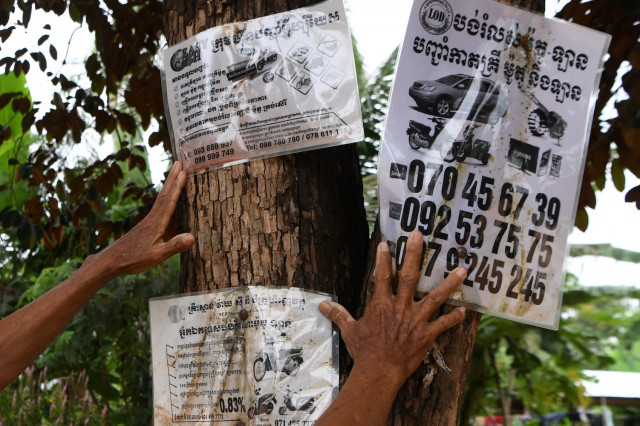
- Christian Berger and Harald Huettenrauch
- March 29, 2021 8:48 AM
Why should a foreign diplomat write an article on microfinance in Cambodia? Allow me to explain.
As a banker by profession and an economist by training, I know that for a country like Cambodia, a solid microfinance system contributes substantially to economic growth in general. Even more important, it enables a larger segment of a country’s population to participate in economic and social development. Development experts refer to this as “financial deepening” or “inclusive growth”.
The comparison between Cambodia and Vietnam as well as Laos, two countries where I have also served, clearly shows how much Cambodia as a whole has benefited from microfinance, simply because microfinance has provided access to financial services for small entrepreneurs and low-income households who would not be eligible for a loan from a commercial bank.
Since the mid-1990s, Germany’s banking sector has actively supported the development of the microfinance sector in Cambodia, so it was for me the obvious choice to ask Harald Huettenrauch, Director of KfW Office Phnom Penh, to join me in writing this article. The following is the result of our joint reflection.
So far, so good. However, the Covid crisis has without any mercy uncovered the structural weaknesses of the Cambodian microfinance system. This came as no surprise to the authors; structural weaknesses tend to develop gradually over time, usually only becoming apparent in crisis situations.
However, what did surprise the authors was that microfinance was made a subject of political polemics. Some critics even seemed to question the value of microfinance as such. Let us not forget: Without microfinance, ordinary people would have the choice between no access to financial services at all, approaching family and friends or borrowing from a loan shark.
Where do the authors see the current structural weaknesses of microfinance in Cambodia? There are basically two:
One is that the Cambodian financial system as a whole was not prepared to deal with a crisis of the magnitude as the one provoked by Covid. Non-performing loans caused the banks and Microfinance Institutions (MFIs) to make loan loss provisions which in turn reduce the profits and could also affect their capital base.
Yet it is true that the National Bank of Cambodia (NBC), at the request of the Government as well as of the banking sector and of the interested public, has responded fast and purposefully by providing monetary policy easing and regulatory relief to the banks and MFIs. In view of the depth of the economic crisis, which was exacerbated by the floods in October, the guidelines on credit restructuring were recently altered again.
Until June 2021 the financial institutions are now allowed to restructure problem loans of crisis-hit borrowers from all sectors of the economy, including the possibility of reducing interest rates and waiving additional fees in addition to only deferring repayments, in a transparent and organized manner based on mutual agreement between banks and clients.
These measures have given a tool to financial institutions to provide temporary relief for the customers. They may have been insufficient, given the magnitude of the problem and the duration of the economic crisis, but if we understand the recently published information correctly, this is still an ongoing process. In this process, we encourage the NBC to continue listening to all actors, including civil society, and - with a view to both the financial institutions and their customers - to provide all the necessary relief, and as long as necessary.
However, one should beware of illusions: The capacity to ultimately repay the loan will depend on the specific circumstances of each borrower. His or her situation in turn will be at least partially defined by the impact of the Covid crisis.
There is a second challenge the NBC has to tackle, possibly even more important than the first one. When the authors started to research in the course of the crisis, they found indications of risky behavior, resulting in an outstanding average microfinance debt level of approx. 3,800 US dollars per customer, which equals to 133 percent of the nominal GDP per capita of 1,633 US dollars in 2019. This is much higher compared to other countries.
Although we cannot verify the accuracy of that average loan size, because the published data do not permit to distinguish true micro credits from other loan products offered by MFIs, it seems to the authors that the pile of private debt built up over time is huge.
And by far not all debt is used for investment. Borrowing for consumption is quite common all over the world, including in Cambodia. It became apparent that sometimes the borrowed money is simply used to finance consumer spending, including large-scale social events like marriages. This undermines the future of precisely those who are getting married. What makes things worse is that it seems to be common in Cambodia to use the family’s land as collateral, including for consumer loans.
If this behavior occurs on a large scale, experts refer to it as a lack of financial literacy. To change such behavior patterns is not easy. It was interesting for the authors of this article to learn that the NBC had become aware of the negative effects of this behavior pattern already two years ago - well before Covid struck. Since then, the NBC has carried out a series of awareness events at local level.
We fully appreciate this effort, but it seems to the authors that the reach is still limited, given that there are more than 2.5 million active clients in the microfinance sector. Therefore, we think this important task to increase financial literacy can only be tackled successfully over time and if relevant actors of civil society participate actively in this endeavour, such as Licadho, which have taken a keen interest in the consequences of over-lending in microfinance recently.
In any case, the financial institutions should have known better. Some of them have possibly contributed to the problem by increasing their loan portfolios aggressively in the past years without paying much attention to setting the incentives right: If it is true that some institutions still pay their loan officers a bonus according to the number of loan agreements concluded and the amounts disbursed rather than according to the quality of the loan portfolio serviced, the loan officers will have the inclination to hand out more and more credit, whatever the credit may be used for.
And as long as the land is used as collateral, again whatever the loan may be used for, they will be happy to accept new customers. Loan portfolio growth rates of 25 percent per year on the balance sheets of some microfinance institutions could indicate that Responsible Finance is far from being a market standard and that self-regulation is not working.
The high-interest rates, not to speak of hefty fees, seem to make lending very attractive for the MFIs, and for their shareholders. While some of the institutions have understood their responsibility for a sound system and have tried to grow their business more moderately, others have grown aggressively. In this context, it may also be useful to have a look at the shareholders/owners.
To contribute to the technical discussion, Germany - through KfW - is currently conducting a study of the Cambodian microfinance sector as part of one of its existing regional projects. Here, researchers with experience in conducting remote telephone surveys are currently interviewing hundreds of active MFI clients.
In doing so, we aim to better understand who these clients typically are, what their experiences have been in working with MFIs, what impact these interactions with a financial institution have had on them, their families and their economic activities, and what suggestions for improvement they would like to see implemented in the future. Results will hopefully be available in the second quarter of 2021.
Mobilizing German funds for this study with the aim to support the regulator to come up with the right decisions is also a clear political signal: Germany – despite all the current problems – continues to be convinced of the value of a healthy microfinance system for a country like Cambodia.
It takes a generation to change financial literacy. On the other hand, it takes only months to sharpen regulations regarding lending standards as well as rates and fees, including tighter regulations for the use of land titles as collateral for consumer loans.
Two simple measures come to the authors’ minds which would immediately increase the transparency in the microfinance system and possibly also lead to a decrease of cost for the borrower. We include them here for further discussion:
1. In its annual supervision report, the NBC could present MFI loan portfolios broken down by different loan products. This would also help to finally clear up a widespread misunderstanding: In Cambodia, there is no clear definition of microfinance and microcredit. The NBC defines MFI by license only (and the corresponding minimum capital requirement to be paid in). Since many MFI clients in Cambodia are Small and Medium-Sized Enterprises, it remains unknown to the interested public whether and how much "micro" lending business these institutions have at all. The reporting by segment would likely reveal that the size of the “micro”finance sector in Cambodia is far away from exceeding 10 billion USD and that it is not composed of 2.5 million or more "micro” credit borrowers as we can frequently read in publications. This would also allow the interested public to understand the true average amount of an outstanding microloan in Cambodia.
2. In order to increase transparency regarding the cost of borrowing, the NBC could require banks and MFIs to disclose the “effective interest rate per annum” (that is, including all commissions and other costs) when advertising credit products and when concluding loan agreements with the borrowers. This would enable the potential customer to quickly compare the total cost of a certain loan product among institutions; moreover, it would immediately contribute to increasing financial literacy in the market.
This brings the authors to the last element of their reflection, the role of loan sharks. In the past, the lack of financial literacy at customer level has traditionally contributed to securing their role in the whole region.
However, in the 21st century, it is difficult for the authors to understand how socially responsible governments can allow this form of primitive, crude capitalism to survive.
Loan sharks are of no value to society, on the contrary: They destroy the social fabric that holds a society together. This is particularly true if they find a way to illegally take possession of their debtors’ land which is usually the main source of income for a whole family.
How to make the species “loan shark” extinct? Improve credit literacy so that people resist the temptation to go to the loan shark and offer people a solid, legal alternative through transparent and sound microfinance institutions.
Christian Berger, Ambassador of Germany to the Kingdom of Cambodia
Harald Huettenrauch, Director of KfW Office Phnom Penh
LICADHO have since responded to this op-ed, their response can be found here.








